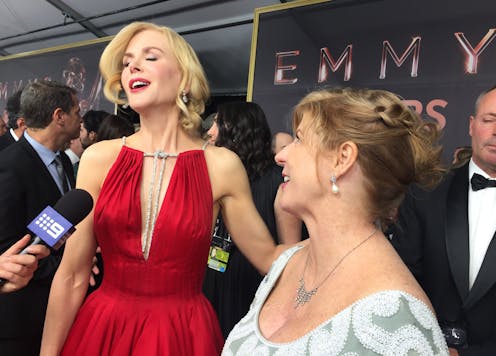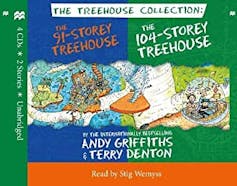Source: The Conversation (Au and NZ) – By Paul Crosby, Lecturer, Department of Economics, Macquarie University

Many authors dream of overseas success for their work, but how Australian books find publication in other territories and languages is not well understood even in the publishing industry.
Our new research has found that between 2008 and 2018, the number of international book rights deals made for Australian titles grew by almost 25%. This was driven, in part, by the international success of adult fiction titles from 2012 onwards and increased demand for Australian books in China.
Interestingly, during this time, over half of all deals were for children’s books. Still, there was a significant increase in the number of deals struck for adult fiction, which now accounts for around 30% of deals each year. More than 9,000 deals were made over the decade.
While almost one in five deals specified the title would remain in English, 13.7% were made for Chinese translations, followed by Korean (7% of deals). The data also reveals the increasing importance of Eastern European markets such as the Czech Republic and Slovenia, along with decreased demand for German, Dutch and Spanish translations.

shutterstock
Read more:
Friday essay: is this the end of translation?
This is the first major attempt to measure the scale of Australia’s international book rights sales. Advances from them deliver a total of around $10 million each year to Australian writers, providing a valuable additional income stream.
Large, medium and even small Australian publishers are negotiating rights deals for their authors, and Australian literary agents are an established part of the international scene.
The success is across a broad range of genres including crime, romance, action thriller, contemporary women’s fiction, self-help and literary fiction.
Rights management involves a seller (who could be a publisher, literary agent or author) licensing the right to make and sell copies of a print, ebook or audiobook, and adaptation rights such as television, film and theatre.
63% of senior agents and publishers told us they felt there had been an increase in international interest in Australian authored books over the ten-year sample period.
Our findings include a report and case studies that aim to shed light on this important commercial and cultural aspect of the book industry.
The kids are alright
Titles aimed at younger readers (picture books up to young adult) were very popular with overseas buyers.

The reasons are not entirely clear: ultimately, the books themselves must work on their own terms in overseas markets. In addition to well-known series such as the Treehouse books by Andy Griffiths and Terry Denton, Judith Rossell’s books featuring Stella Montgomery, and John Flanagan’s Ranger’s Apprentice and Brotherband adventure series, there are hundreds of lower-profile titles which have “travelled”.
The decades-long expertise of Australian authors, publishers and agents in specialist children’s genres (often overlooked in the industry before the success of the Harry Potter series) is also likely to be a factor.
Deal-making
Since the 1980s, Australian publishers and literary agents have quietly been building international networks based on years of attendance at key book fairs in Frankfurt, Bologna, New York, London and more recently, Shanghai. These fairs, along with welcoming delegations of publishing executives and other strategies, help them find exactly who might be receptive to a pitch about their latest Australian books.
As Libby O’Donnell, Head of International Rights and International Business Development at HarperCollins Australia, puts it, “Every book can potentially have some readers overseas but not every book can have a market overseas that makes it viable to publish.”
While attendance at book fairs and personal relationships are key to successful deals, we observed different models of deal-making. O’Donnell was involved in international auctions for Trent Dalton’s Boy Swallows Universe and Meg Mason’s Sorrow and Bliss.

David Kelly
She describes developing a carefully timed international campaign to draw out the biggest bids for these books. Six groups competed for the television rights to Boy Swallows Universe.
But rights sellers who work for some of the largest Australian publishers also described their passion for finding overseas publishers for books with less commercial potential. For Ivor Indyk at the highly respected literary press, Giramondo Publishing, it’s about forming alliances with like-minded literary publishers enabling overseas publication of Australian books that may become part of a literary canon.
Although publishers and agents benefit financially and in terms of prestige, ultimately, the biggest beneficiaries are authors. For most authors, the majority of their income will be from the Australia and New Zealand market. Rights income is “icing on the cake”.
A small proportion of Australian authors can live off their rights income, or sell substantially more books overseas than here. But most authors are excited by the opportunity to have their work read and appreciated overseas; offering another income stream and enhancing their international reputations.
However, the pandemic has hit the international book industry hard – with international travel on hold for so long.
Our report recommends initiatives such as mentoring arrangements and continued investment by industry and government in outgoing and incoming trade delegations (including to key book fairs). This will be more important than ever as publishers and agents re-establish connections after a hiatus of nearly two years.
![]()
Paul Crosby receives funding from Australia Council for the Arts and the Copyright Agency Cultural Fund.
Jan Zwar receives funding from the Australia Council for the Arts and the Copyright Agency Cultural Fund.
– ref. New research finds a growing appetite for Australian books overseas, with increased demand in China – https://theconversation.com/new-research-finds-a-growing-appetite-for-australian-books-overseas-with-increased-demand-in-china-170015







